Bula! It has been over a week since my last blog post, so here’s an update. Alexi and I have been staying in Suva and have been dealing with pre-production logistics. While Alexi has been working on scripting and preparing the shooting schedule, I have had a series of meetings with people at the University of the South Pacific and the local film and video community who may be able to contribute to the production. In addition, we have met members of the expatriate community here in Suva who have provided helpful advice and contacts to us. They also invited us to some interesting events, including a fascinating academic talk (sponsored by the local LGBT organization, the Drodrolagi [“Rainbow”] Movement) by Tulia Thompson, a very bright Kai Loma (mixed-race Fijian and European) woman from New Zealand, as well as a mime and hip-hop show (!) put on by a French mime master (Laurent Decol, student of Marcel Marceau) and a local hip-hop team (VOU Dance) raising money to get to the hip-hop championships in Las Vegas (!). In addition, we have run into many friendly and insightful locals from Suva who we may interview for the film.
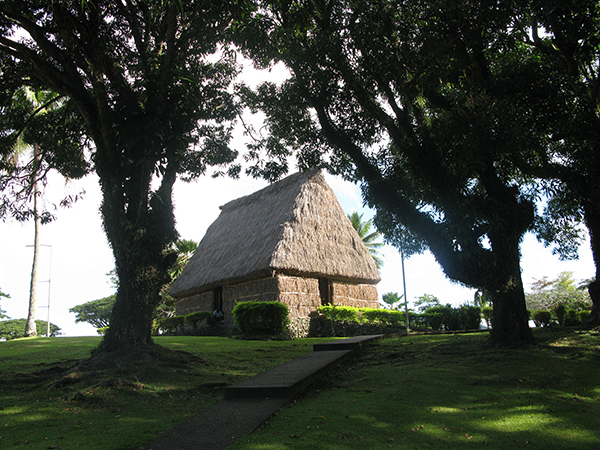
Some of the most important and interesting work we have been doing has been related to location scouting. One location that we shot on an earlier visit has changed dramatically—the Grand Pacific Hotel. The Grand Pacific Hotel was a jewel of colonial Suva and Jean remembers going to dinner and afternoon tea there as a child, and later to going to dances when the American Officer’s Club was located there during World War II. When we previously filmed at the Grand Pacific six years ago, the hotel was closed, in terrible condition, and occupied by a battalion of soldiers (this was shortly after the 2006 coup-Jean did manage to talk her way in with the soldiers! See the trailer) During our second trip in 2011, the hotel was in similar decay with no sign of repair. Today, the hotel has been gloriously restored and expanded. The soldiers are gone, replaced by a large and solicitous Fijian staff serving a clientele of international jetsetters drinking tropical cocktails by the pool. Other than the fact that the guests are racially diverse, it could be 1930 all over again. We are planning to shoot there and are awaiting final approval.
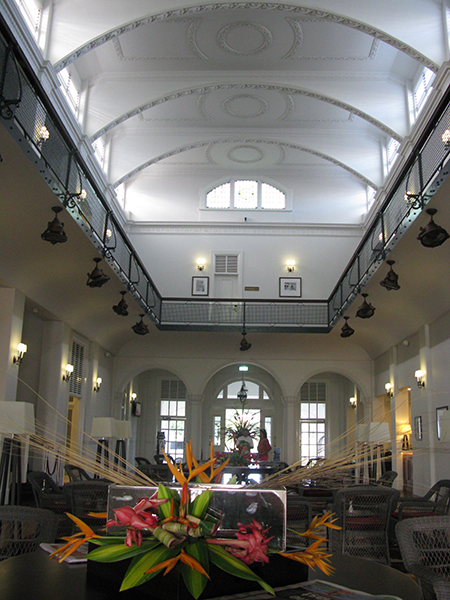
Next, we drove to Navua to take a five-hour trip upriver to the village of Namuamua. We came here for several reasons. One, Alexi’s grandfather Alfred Lee had worked as a sugar mill engineer somewhere in this area and we wanted to see if there was anything left to see of the old mills or plantations. In addition, we are interested in possibly shooting some “beauty shots” of the amazing Fijian scenery along the river. Finally, we also wanted to see if the village could be a place to shoot village life or a reenactment for the film.
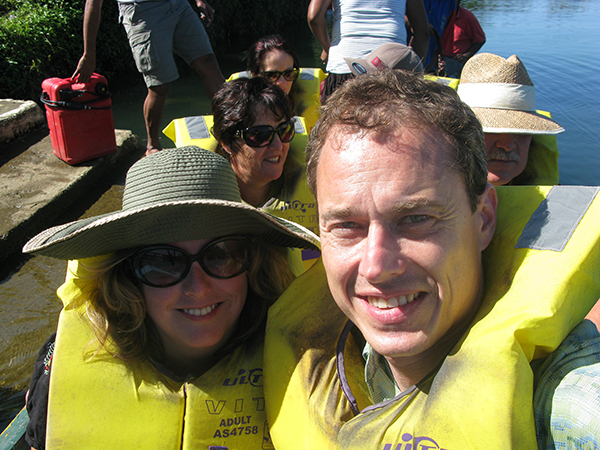
Well, it was a mixed bag in terms of finding locations, but it was quite an enjoyable day! The Namuamua villagers who organize and run the tour do a great job of giving visitors a full and exciting experience. We started out in Navua at a house near the river. There a friendly family of four adult Aussies who had also signed up for the tour joined us. We all loaded onto a longboat with an outboard motor along with our boatman and three village women. As we started motoring upriver, we enjoyed the lush scenery all around us. After 45 minutes or so, the landscape became much more dramatic as we passed by steep forested cliffs which were occasionally graced by lovely waterfalls.
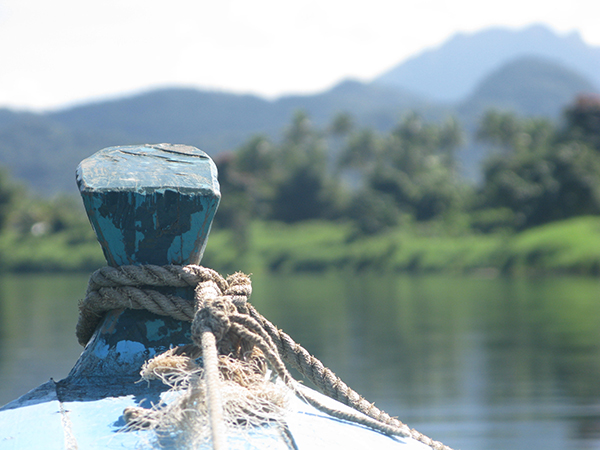
From time to time, the water would turn rougher and the boatman would have to negotiate the white water and protruding rocks and obstacles. Sometimes he would also have to get out and push the boat through shallow waters and the Aussie men and I had to also get out to help at one point. Halfway through our journey, we stopped at a particularly impressive waterfall and were given time for a swim under the falls.
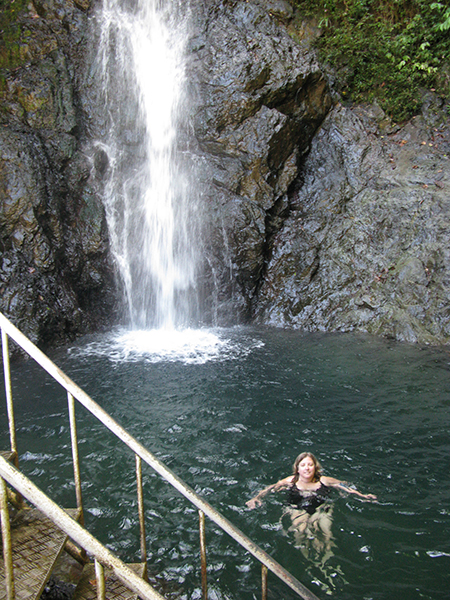
Then it was back in the longboat. All along the river journey, we would pass by children walking along the bank, women washing clothes on the rocks, fishermen in bamboo canoes, etc. etc. All very captivating but hard to photograph from a distance on a motorized boat!
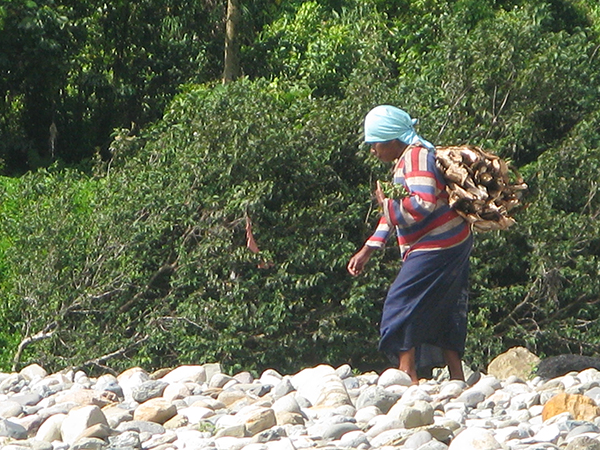
Finally, after about a two-hour voyage, we arrived at Namuamua Village. We were greeted by waving villagers on the dock including women in matching yellow print dresses and a young man dressed as a traditional warrior.

We were led up to the village where we were led into a bure (traditional building) where we received an official welcome with a cava ceremony, featuring the ceremonial drinking of water infused with yaqona root which causes a slight numbing of the mouth but is non-alcoholic. The oldest Aussie acted as the “chief” for our visiting group.
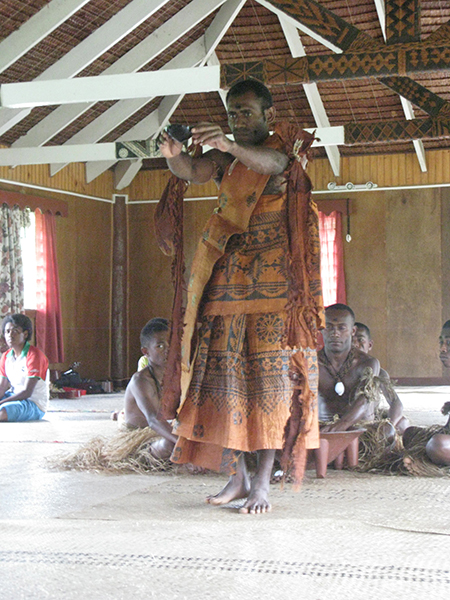
After this ritual, we were given a tour of the village by a small army of local children (very cute!).
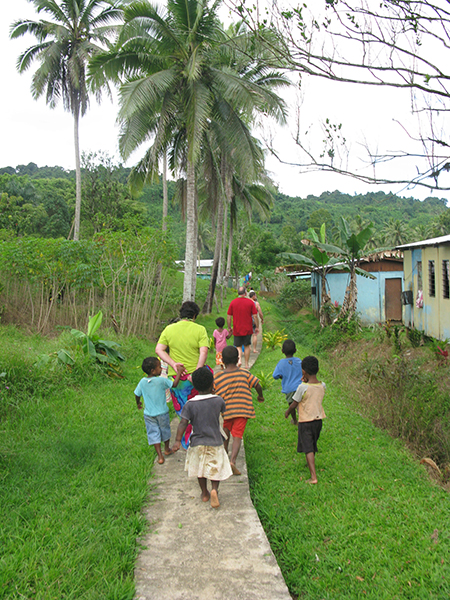
After that, we returned to the bure to enjoy a slightly terrifying spear dance, a concert of traditional music, and a “disco” which was us dancing together with our hosts in several dances including a kind of square dance as well as a kind of conga line (!). It goes without saying that this was a lot of fun.
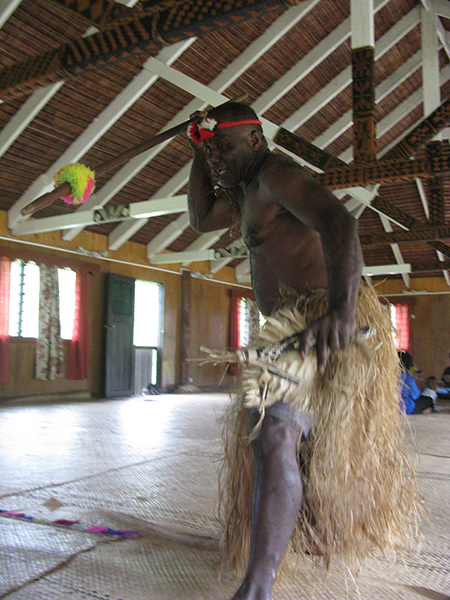
Finally, we were treated to a lovo (traditional meal cooked in the ground) that for some reason included tuna sandwiches and a Tang-like drink (perhaps they thought we would like this). I preferred the tender chicken and the taro root covered with wonderfully seasoned taro leaves. After lunch, the villagers brought out beautiful and very inexpensive handicrafts for us to peruse and buy if we so wanted. Of course, we bought a few things! Finally, they sang us a farewell song (“Isa Lei”—Fiji’s famous song of goodbye) it was back on the boat and a much quicker ride back down river. We stopped only once to try riding a bit on a traditional bamboo raft. We felt like Huck and Jim!
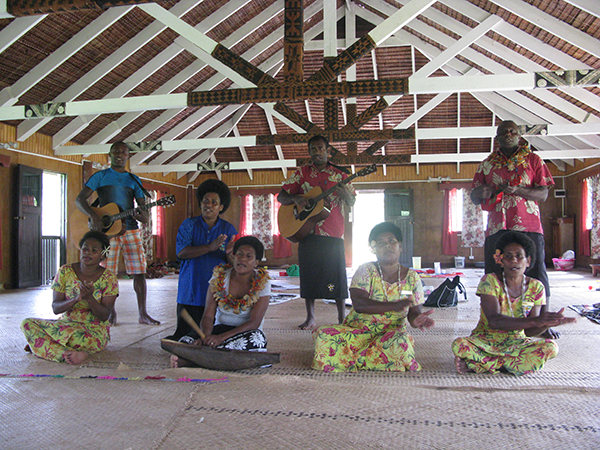
Unfortunately, we won’t be able to shoot at the village because it is too difficult to get to, and we never found any remains of the sugar mills. However, we plan to rent out one of the longboats for a shorter journey upriver to get our “beauty shots”.
More to come, Wynn
